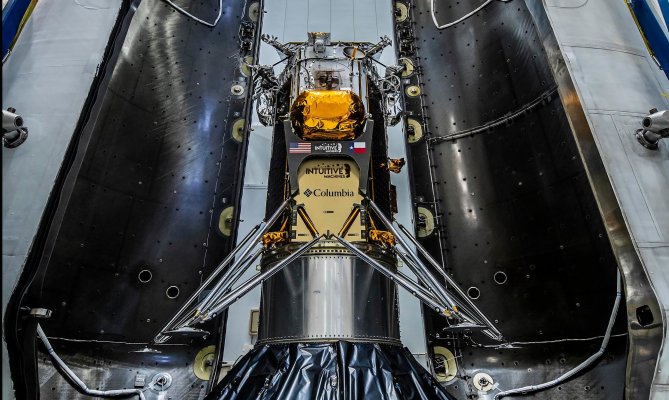ARTICLE AD

Intuitive Machines is looking to succeed where past ventures have failed with its inaugural lunar lander mission, which would mark the first time a private company has landed a spacecraft on the moon — ever.
The mission is poised to lift off on a SpaceX rocket just at 12:57 AM EST tomorrow from the launch company’s pad at Florida’s Kennedy Space Center. Should the launch be delayed, SpaceX will have additional opportunities on February 15 and 16.
Should everything go to plan, after a roughly seven-day journey the spacecraft will enter lunar orbit. Around 24 hours later, on February 22, the Nova-C lander will make a soft touchdown on the moon’s surface. The lander is targeting an area near a crater called Malapert A near the lunar south pole, an area that is suspected to be home to plentiful frozen water.
The two companies announced they were a ‘go’ for launch on Monday, saying in a statement that it had completed analysis of data from the final lunar lander fueling tests. Those tests were critical because of Nova-C lander’s unique propellant system: it is using liquid oxygen and methane propellants that must be loaded while the lander is encapsulated in the Falcon 9. (Usually spacecraft are fueled before being loaded onto the rocket.)
The IM-1 mission — a first for Intuitive Machines — marks the second time this year that a U.S. company is attempting to land a spacecraft on the moon. The first mission, conducted by Pittsburgh-based Astrobotic Technology, came to a very quick demise after the spacecraft suffered a catastrophic propulsion leak.
Intuitive Machines’ mission also follows that of Japanese firm ispace, whose own lander experienced a software glitch just above the lunar surface, which caused the spacecraft to misjudge its distance from the surface and crash.
Indeed, the recent successes on the lunar surface can be claimed by governments, specifically that of India’s Chandrayaan-3 moon mission last August and Japan’s SLIM lander that touched down (upside down) in January. But landing on the moon is hard, and even nations have had failures; a recent notable example is Israel’s Beresheet lander, which also crashed into the moon in 2019.
The 14-foot-tall spacecraft is carrying six scientific and research payloads for NASA, which commissioned the launch for around $118 million as part of its Commercial Lunar Payload Services (CLPS) program. Astrobotic was also a CLPS awardee. The lander, called Odysseus, will also be carrying payloads for a handful of commercial customers.
But whether or not it succeeds at this first mission, Intuitive Machines has already scored additional NASA contracts for two more moon missions: one that could take place in the fourth quarter of this year and a third scheduled in early 2025.
SpaceX will host a live show of the launch on its website.

 1 year ago
81
1 year ago
81 

